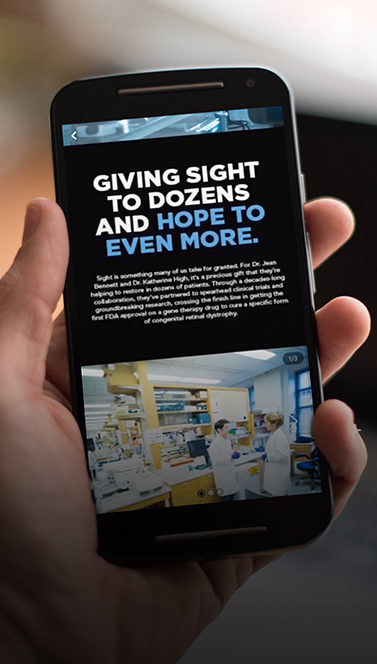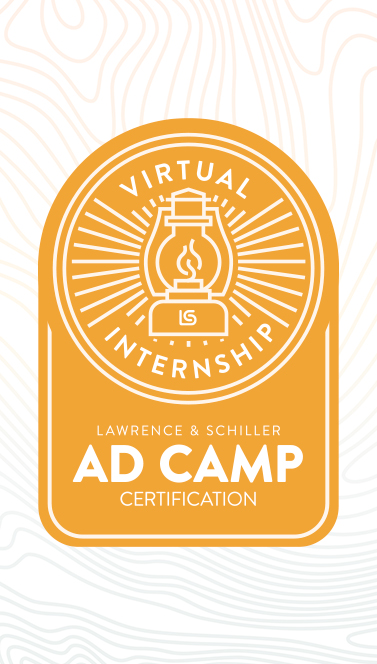Five Health Social Strategies We Love
- Health & Wellness
- 02.13.18
- 5 Min Read
According to the Pew Research Center, around 70% of Americans use some type of social media. Yet only 26% of all hospitals participate in it.
It’s time to close the gap.
Social media offers huge opportunities for hospitals, medical device companies, insurers and more to connect with current and future audiences. In a report from PricewaterhouseCoopers, 41% of people said social media would affect how they cope with a chronic condition or choose a health care provider.
The bottom line: health organizations need to be where the patients are – and that’s on social. Plus, in an industry like health where services are usually needed in an unplanned or urgent way, it’s critical to stay top of mind, ensuring your brand has meaning and relevance when patients demand it. These five organizations are great examples of how a smart social strategy can help you lead the industry.
1. MAYO CLINIC
What’s to Love: Staying on the Forefront of Social Trends
Mayo Clinic is a leader for reasons beyond its life-saving care. In 2010, Mayo created the Center for Social Media to coordinate initiatives, including a Social Media Network housing webinars, blogs, discussion groups and more for healthcare professionals. Their medical network of physicians is encouraged to blog and use social media to drive patient conversations.
Mayo also pushes original content through online channels like Mayo Clinic Radio, a podcast on health issues. After the clinic began promoting these podcasts on social, listeners rose by 76,000 in a single month.
Finally, Mayo Clinic understands that the whole point of social media is making connections. So they created Mayo Clinic Connect, a platform of online discussion and support groups for cancer patients, caregivers, transplant recipients and more. Bravo.
2. CLEVELAND CLINIC
What’s to Love: A Robust and Relevant Content Marketing Strategy
With nearly two million Facebook followers, Cleveland Clinic shows how a well-thought-out content marketing strategy can meet many goals: educating patients, promoting services and providing relevant social content that connects.
The clinic’s Health Essentials blog features content written by several different teams on topics ranging from vaccinations and blood pressure to healthy recipes. Check out this infographic on Americans living longer lives.
In addition to creating valuable content, Cleveland Clinic promotes it across an array of social media platforms, and call-to-actions prompt users to subscribe to daily wellness tips and weekly newsletters for ongoing patient touchpoints.

3. UNITEDHEALTH GROUP
What’s to Love: A Rapid Response Strategy That Puts Patient Experience First
As an insurance and health technology provider, UnitedHealth Group shows the power of customer service in the social media era. On Facebook, the brand replies instantly to comments, questions and patient concerns. And trust us, Facebook’s “typically replies instantly” categorization is hard earned. Each reply is marked with initials to identify the customer service associate behind it.
Where many health care organizations can be wary of answering via social media for HIPAA and legal reasons, UnitedHealth uses it as an opportunity to keep customers satisfied and resolve issues before they spiral into a negative social media firestorm. The brand understands that responses need to be handled carefully rather than not at all.
This same service-oriented approach applies to UnitedHealth’s current “How Can We Help” campaign.
4. MD ANDERSON CANCER CENTER
What’s to Love: Inspirational Storytelling from the Patient Perspective
MD Anderson Cancer Center understands the profound impact cancer has on lives and tells real stories to reflect this in its Cancerwise blog.
These patient stories of hope, survival and perseverance all echo the expertise of MD Anderson while at the same time putting patient experience, outcomes and humanity behind every post. Stories range from a woman completing her first mammogram to breakthrough tumor removal surgeries only done at MD Anderson.
These stories go a long way toward driving home the organization’s mission of crossing out cancer for good.
5. MEDTRONIC, NOVARTIS, DUCHESNAY USA & OTHERS
What’s to Love: Engaging Social Media Influencers to Spread Stories
A creator of insulin pumps, Medtronic learned its audience of diabetes patients is extremely active on social media. In addition to sharing consumer content via Instagram, Medtronic lets followers take over its account, showing their lifestyle with the disease. Beyond posting content, the company hosts social media contests, awarding trips to their headquarters in California. In fact, the winner of their #DiabetesDoesntStopMe contest hails from South Dakota and is a former L&Ser; Katie Sterner was flown to Medtronic headquarters and documented her journey on their blog.
Last year, Novartis teamed up with Queen Latifah using live Facebook video to promote its Rise Above Heart Failure initiative. The video was broadcast on World Heart Day, telling the story of Queen Latifah’s mother who survived heart failure a decade ago.
In another example, pharma company Duchesnay USA employed social influencer Emily Maynard (of The Bachelorette fame) to promote its morning sickness drug Diclegis on Instagram. With nearly 700,000 followers – many being young women and moms in the brand’s target audience – her posts have helped gain awareness for Diclegis in a relatable way.

These five examples share many themes, but the greatest is a move toward the humanization of health care. In an industry that can be known as cold and clinical, they’re making a conscious effort to put human faces and empathetic stories behind their brands. And since it’s built for making connections, social media is the perfect platform to spread the message.
If you want to get started on social but don’t know how, check out some of our health care marketing work and contact us. We can help your organization navigate social media communication strategies, etiquette, monitoring and responding, legalities, and more.







